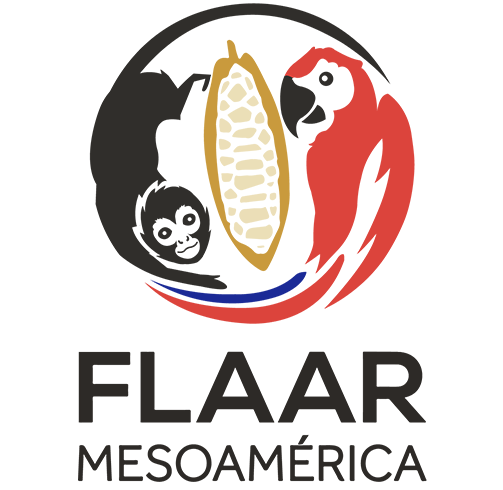
We are interested in flora, fauna, and educational research in Mesoamerica
We are aware of the importance of the Zapotec, Mixtec, Totonac, West Coast Mexico, and diverse other civilizations. The Guatemalan ruins of Bilbao and Cotzumalhuapa civilization is a great example of how cosmopolitan some cultures were.
FLAAR is interested in flora, fauna, and educational research in Mesoamerica. We work in all areas of Guatemala but especially Alta Verapaz, Baja Verapaz, Izabal, and Petén.
About us
FLAAR Mesoamerica is a civil, non-profit, independent association, with educational and research purposes, which currently develops projects to promote the conservation of the environment and the cultural heritage of the Mesoamerica region; using technology for processing digital images. FLAAR Mesoamerica is an extension in Guatemala of the non-profit institution FLAAR (Foundation for Latin American Anthropological Research) located in Missouri, United States.
FLAAR has a team made up of professionals and students from different areas and ethnicities and is directed by archaeologist and photographer, Dr. Nicholas Hellmuth, who has experience as a consultant in traditional professional photography and digital photography. The assembled team consists of graphic designers, illustrators, engineers, biologists, photographers, and explorers who contribute to educational materials that are shared through FLAAR websites and social media.
Mission
We promote the dissemination of information on the diversity of native flora and fauna species and Pre-Colombian heritage in Mesoamerica. Using digital technology, for conservation and educational purposes, we share with educational, governmental, and private institutions, and the general public.
Vision
To be the leading institution of the Mesoamerican region in the documentation, study, and dissemination of the diversity of native species and the Pre-Columbian heritage
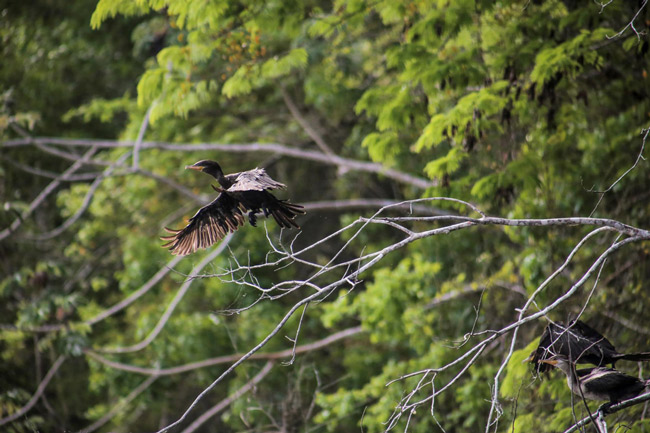
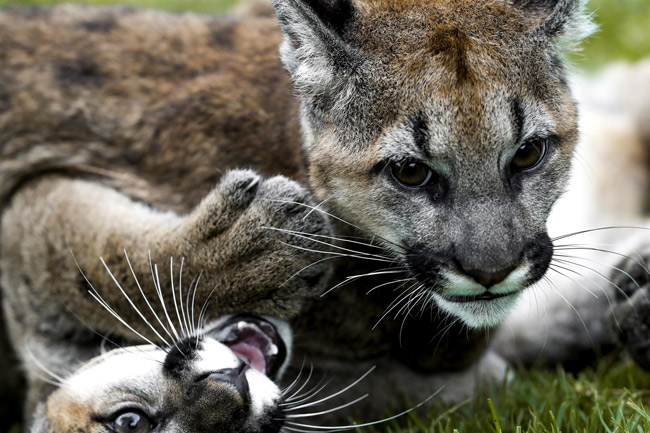
What do we do?
Our current projects have the purpose of documenting through high-resolution photography (300dpi) the existing biodiversity in protected areas of Guatemala. These photographs have been used to generate photographic reports and educational material on our platforms. They have also been donated as valuable resources to corresponding authorities and institutions.
The following are several examples of our work over the years that has gained publicity and included strong alliances with governmental institutions:
- Yaxhá Project: During 2018 and 2019 expeditions were carried out to the Yaxhá, Nakum, and Naranjo National Parks to document biodiversity.
- Livingston Project: In September 2020, the “Livingston Biodiversity Documentation" agreement was authorized by the mayor of Livingston, Eng. Daniel Pinto. It was carried out for 15 months in the protected areas of the municipality: Río Sarstún Multiple Use Area, Río Dulce National Park, and Cerro San Gil Springs Protective Reserve.
- Reserva de Biósfera Maya Project (RBM): In March 2021, the Biodiversity Documentation agreement was authorized in the primary Protected Areas of the Maya Biosphere Reserve in cooperation with the National Council of Protected Areas (CONAP).
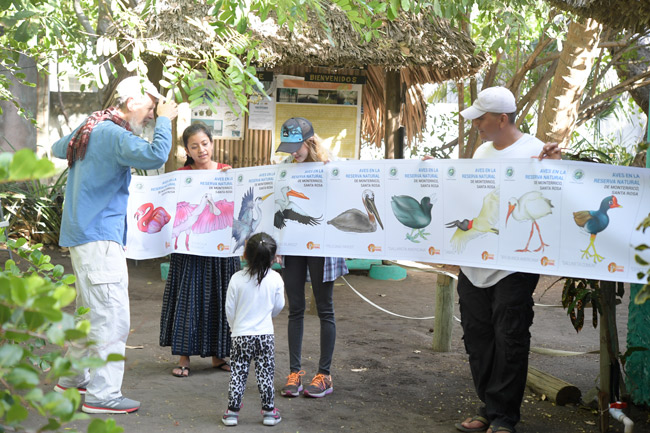
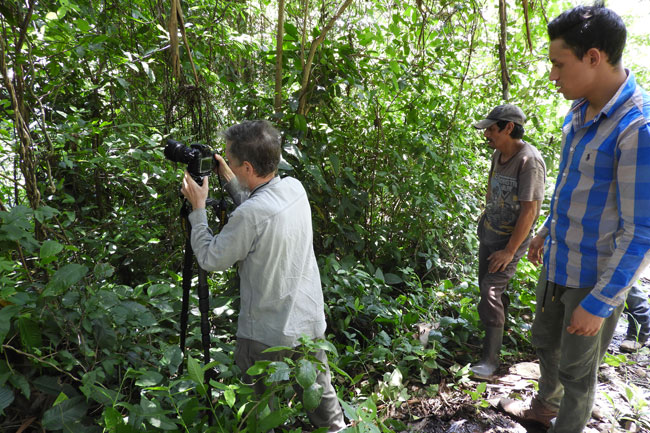
How do we do it?
We carry out field expeditions that generally last 7 to 10 days to photograph and collect information on the species of flora, fauna or ecosystems that are interesting to us. Subsequently, this information is processed by our research team of biologists, environmental engineers, agricultural engineers and students of those fields. Once the information is processed, it is transferred to designers for the preparation of reports; then to the web and social media team for the sharing of photos and notes on our digital platforms. We also have a video team for the editing of informative videos.
Our Story
FLAAR (Foundation for Latin American Anthropological Research) was created in the United States in the 1970s, when archaeologist Dr. Nicholas Hellmuth worked on the development of the map of the Yaxha archaeological site, which later became the National Yaxha Nakum and Naranjo National Park (PNYNN). In the following years, he conducted research in Mesoamerica to document pre-Columbian cultures.
Later, between 2001-2005, FLAAR established the Technological Center for the Processing of Digital Images (CTPID). in conjunction with Francisco Marroquín University. In this center, digitalization and printing services and education were provided as a private initiative. Upon encountering limitations to continue operations within the university, the FLAAR Mesoamerica Association was founded in 2006; as a non-profit civil association under Guatemalan law. The main interests were initially providing advice and training in the area of digital technology for government and private institutions as a development tool for society.
Since 2006, the FLAAR Mesoamerica team has been carrying out evaluations of the entire range of equipment for the production of high-resolution images, with the purpose of providing information to scientific and educational institutions, and to any interested party, about the benefits, deficiencies and applications of each technology.
Assessments on imaging technology have been published on the FLAAR websites network wich is visited annually by more than 100,000 visitors. The FLAAR team has extensive experience of the three stages of digital image production:
- Capture, through digital cameras, scanners and drones with which images can be recorded digitally.
- Editing, by means of software and programs designed to manage and improve the images with which the files are created for publication and distribution.
- Printing, with wide format printers, which allow images to be obtained in different mediums using variable ink technologies, to share the captured images in physical form.
Over the years, the research carried out on the image digitization workflow has also given FLAAR Mesoamerica the possibility of developing documentation projects on the biodiversity and cultural heritage of the Mesoamerica region, especially in the area from Guatemala.
💡 These projects are primarily focused on producing photographs and videos that may be useful to institutions and people involved or interested in the conservation of the environment and cultural heritage; and as a secondary objective, to provide relevant information on the species or documented subjects. These projects have been carried out periodically since 2006 in different areas of Guatemala such as the Pacific coast, the departments of Baja Verapaz, Alta Verapaz, Izabal , Petén, and others.
High-resolution photographs of aspects of biodiversity and culture of the communities are taken during project field trips. The most recent projects have been carried out in the Yaxha, Nakum and Naranjo National Parks; Livingston and in different areas of the Maya Biosphere Reserve.
Through this work, FLAAR Mesoamerica has been able to collaborate by giving advice and training to organizations interested in promoting education and research, especially if they are linked to community development, nature conservation or cultural heritage projects.
Our Mayan related websites
Maya-Ethnobothany
Visit WebsiteThis site is a leader in Google results for Maya ethnobotany. We focus primarily on edible plants used by the Maya beginning thousands of years ago (and which should be re-introduced to improve health).
We also study eco-friendly renewable resources for practical use.
Maya-Ethnozoology
Visit WebsiteOur site documents the diverse kinds of creatures of Neotropical Mesoamerica and their connections to Maya culture, iconography, and art.
Maya-Archaeology
Visit WebsiteDr. Hellmuth discovered a royal tomb in 1965 (while a student at Harvard, working for the University of Pennsylvania at Tikal).
Then in the 1970’s he worked for five years to have the Yaxha-Sacnab area preserved as a national park. Plus with Miguel Orrego they mapped the entire ancient city.
Photography & Printer Websites
Digital Photography
Visit WebsiteThis site shows our years of photography experience.
National Geographic published Nicholas’s photos already 40 years ago!
Although we have a good range of digital cameras, lenses, tripods, etc. we are always looking for donations for an 800 Canon or an 800mm Nikon lens to document distant wildlife!.
FLAAR REPORTS
Visit WebsiteA separate team has 20 years experience with Dr. Nicholas wide-format inkjet printers, cutters, etc.
This experience makes it possible to provide printed posters for schools.
Our MayanToons Websites
MayanToons
Visit WebsiteMeet our friends Jagggy the Jaguar, Cutie the Coati , and Tappie the Tapir!
Using our expert knowledge of Mesoamerica flora and fauna, we prepare scientifically accurate and educational animated films and children’s books.
Our goal is to coordinate our decades of experience with a major international animation studio to “WOW" the world with our friendly educational characters.
Mayan Characters
Visit Websitewww.Mayan-characters-value-
based-education.org
This site shows the background of Dr. Nicholas with plants and animals as educational materials.
You will see him interacting with jaguars, pumas, and with tarantulas crawling up his arm.
